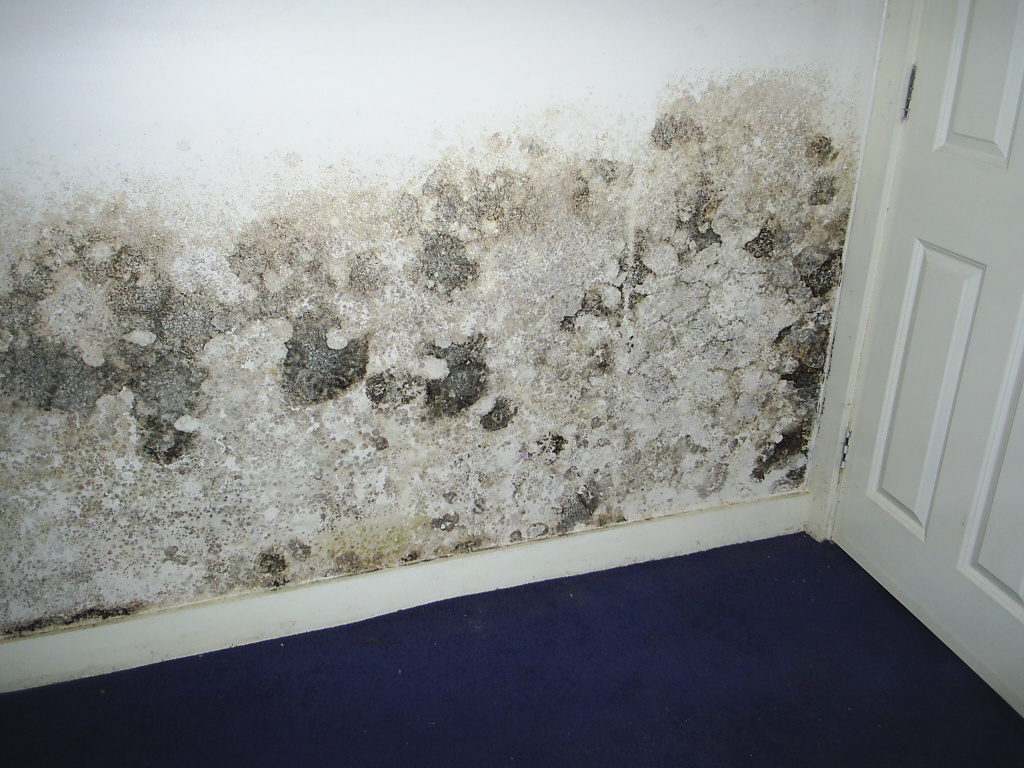What is Condensation?
Air carries water in the form of water vapour, and the warmer the air the more water vapour can be carried. The measurement of the amount of water in the air is called humidity and air with a high water content is said to have a high humidity.
Cool air holds less water than warm air, so if humid warm air cools down when it comes into contact with a colder surface it must get rid of some of the water it holds. This excess water is deposited on to the colder surface and we may see it as drops of liquid water running down a window pane, for example. We call this condensation.
The water in the air can come from a variety of activities within the home, for example:-
All houses will suffer from some condensation from time to time, but severe condensation is a very common problem particularly in cold weather and in older houses.
As well as water streaming down windows and on to the window sills and walls beneath, water may collect directly on walls, especially behind large pieces of furniture and curtains.
If wood, wallpaper and plaster are badly affected they will become permanently damp and unsightly mould will start to grow (usually the black spot mould Aspergillus niger). Over a prolonged period, wood will rot and plaster may become perished.
When Does Condensation Occur?
Condensation always occurs when humid air is cooled below the temperature (dew point) at which it can hold the amount of water it has absorbed. If the air is fairly dry, it can be quite cold before water starts to condense. The more water held in the air, the higher the temperature at which condensation starts, and in very humid conditions condensation will be found even on quite warm surfaces.
How Can it Be Cured?
Curing severe condensation can be complicated, because it is affected by temperature, humidity and ventilation and also because the source of the water in the air is often unavoidable – we cannot usually cut down on washing, cooking and breathing.
There are three main areas of consideration, and all should be looked at if you have a problem:-
Reducing the Humidity
As we have already seen, it is impossible to stop water from getting into the air completely, and indeed medical evidence suggests that high humidity can be beneficial to people with respiratory problems. It is sensible though, to keep activities which produce a lot of water vapour localised, as the areas in a house where steam is produced are usually warm and so condensation will be less than if the humid air spreads to the colder parts of the house.
- Keep internal kitchen and bathroom doors closed when these rooms are in use (and for some time afterwards).
- If possible, dry clothes out of doors and always vent a tumble dryer to the outside.
- Avoid forms of heating which produce a lot of water vapour e.g. bottled gas heaters.
- Use an automatic kettle or whistling kettle.
- Deal with any other types of damp from which the house suffers – rising damp and penetrating damp will both contribute to condensation and will cause other damage as well.
Removing the Humid Air
If very humid air can be removed from the house quickly, it will not have time to cause condensation. The key to this is good ventilation near the source.
- When cooking and after bathing/showering, open a window or use a cooker hood or extractor fan.
- Never draught-proof a room to the point where there is no air circulating through it. Even breathing will result in condensation. This may mean losing a little heat, but the resulting dryer air will generally feel more comfortable than a clammy atmosphere.
- Move large items of furniture a little away from exterior walls so that air can circulate behind them.
- Investigate blocked up chimneys and make sure there is sufficient ventilation. If a chimney is bricked up without installing an air brick, condensation can occur inside the chimney and may eventually soak through into the room.
- Keep cellar and sub-floor areas well ventilated and check periodically that cellar windows are open a little and air bricks are not blocked. If possible ensure that there are two ventilation points so that air circulates. Leave any internal cellar doors ajar.
- When insulating a loft space (and especially if it is also boarded and/or clad) leave plenty of space at the eaves for ventilation. If there is not enough air circulation in a loft, condensation can soak the roof timbers and lead to mould and rot attack.
- Remember that new plaster will take several weeks or even months to dry out and can add to condensation problems whilst this is happening – so increase the ventilation in recently re-plastered rooms.
Keeping the Moisture in the Air
Except in very wet or cold conditions, air will hold a lot of water vapour. It is only when this air is cooled significantly that a problem arises, so keeping heat in a room and eliminating cold surfaces will prevent condensation (but remember that very humid warm air will always find the coolest surface to condense on).
- Do not let a room get very cold for long periods. Check unused rooms frequently for condensation and keep them heated a little (and ventilated) as even relatively dry air will cause condensation if it is cooled enough. Only use dry sources of heat and keep interior doors closed to prevent humid air getting into the unused room from the more active parts of the house.
- Insulate to make the most of the heat you have, to avoid large heating bills.
- An expensive solution to condensation on windows is double glazing. Sealed units with a sufficiently large air gap will also reduce direct heat loss and should have the added benefit of being more draught proof. Secondary glazing is cheaper and several DIY methods are available, but if these are not well sealed moist air will get into the gap and condense on the outer window. This can be significantly reduced by putting packets of silica gel crystals into the gap to absorb the moisture from the air (several proprietary products are available). These need regular attention as they are “used up”.
- Very cold walls can be lined with an insulating material (such as thin expanded polystyrene) and then decorated. Cavity wall insulation, a more expensive option, will give better results. Generous grants for this may be available from your Local Authority, or through your energy service providers (e.g. gas or electricity supply company). Insulate all lofts and dormer walls to prevent condensation on these surfaces.
- If a timber floor is cold, seal the gaps between floorboards or lay a thick underlay (inspect the floor for rot and woodworm before fastening down a permanent covering). Do not treat the problem by reducing the ventilation to the sub-floor or cellar beneath – you will just move the condensation and its resulting problems out of sight.
- Water pipes and tanks in kitchens, bathrooms and below floors or in roof spaces can attract lots of condensation which drips off the lowest point resembling a leak and concentrating damage. Lagging with foam tubes or wrapping with insulating materials will prevent this.
What is Mould?
Mould is a naturally occurring micro-fungi. Its purpose is to decompose organic matter.
Mould spores are everywhere but they require the right environment to be able to germinate.
A mould spore requires water and food to germinate. It is a common problem in occupied buildings due to the varied organic materials and possessions we store within them and quite often due to the way we occupy them.
How to Manage Condensation & Mould
First and foremost, do all you can to cure or reduce the condensation by following the guidelines above.
Treat mould on woodwork and walls with a proprietary fungicide/cleaner or a weak solution of household bleach. In cases of severe attack redecorating will probably be necessary. If the condensation cannot be cured completely you will need to inspect affected areas and repeat the treatment periodically.
Where condensation is unavoidable (as in bathrooms and kitchens) decorate walls with suitable water repellent tiles, paints or other suitable wall coverings specifically designed for use in areas of high moisture.
If woodwork has been affected badly enough for wet rot or dry rot to attack it, it should be replaced with new timber. Dry rot attack will require more extensive specialist treatment to prevent it from spreading to other parts of the house. You should always consult a specialist timber treatment company where dry rot is suspected.
If plasterwork has become wet it may have perished due to salt contamination and will then need replacing. Our recommendation is to use a water-resistant renovating plaster such as Tarmac Limelite or alternatively Thistle Dri-Coat.
Often severe rising damp can promote condensation, which can allow mould growth.

In this photo, the original rising damp NEVER gives rise to liquid drops of water appearing on the wall’s surface. However, a damp wall is a cold wall, on which condensation can take place. This introduces the liquid water needed for the sores of moulds and fungi to grow. In this case, the mould is Aspergillus niger. also known as black spot mould.

